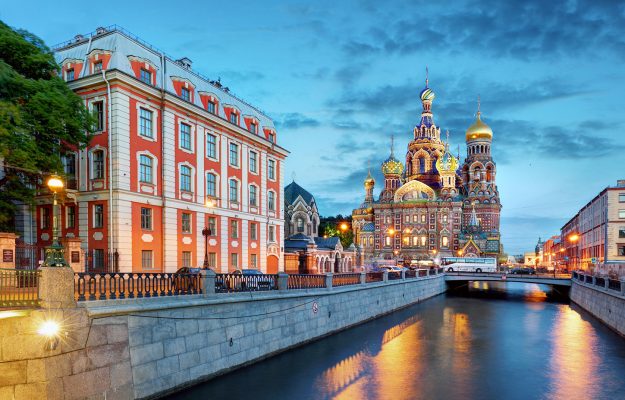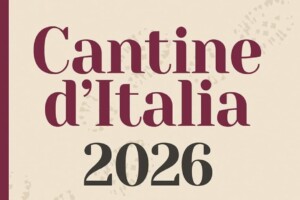Russia, as far as wine consumption is concerned, confirms to be a two-faced market. On the one hand, growth in the long term is constant, driven, as in more mature countries, by the middle class and Millennials of the two big cities, Moscow and St. Petersburg, therefore categories of consumers who, in their pantheon, have also put wine in a stable way. On the other hand, however, the pandemic in Russia has affected as much as and more than in the rest of the world. The oil crisis led to a considerable devaluation of the ruble, and therefore to a loss of purchasing power, especially of imported goods. If we add to this the effect of the forced closures of restaurants, and therefore to the almost zeroing of socializing moments, the picture for the consumption of wine, especially of quality, becomes bleak. These, however, are only the premises of the picture painted by the “Russia Wine Landscape 2021” of Wine Intelligence, which has identified seven main trends: steady growth in volume and value of consumption through 2019; growth in the number of wine lovers between Moscow and St. Petersburg; growth of the off-trade channel driven by the drop in currency and the increase in taxes; the strong position of Italian wine; growth of Millennials in the shares of wine purchased, especially in Moscow and St. Petersburg, with increasing involvement; as prices rise, consumers are looking for more and more discounts and rewarding value for money; and finally, with the pandemic drop in consumption (although more evidence will come at the end of the first half of the year).
As mentioned, the wine market in Russia is experiencing a long-term growth trajectory, which began in 2015, and between 2019 and 2020 it climbed 23 positions among the most attractive markets for still wine trade, placing at position No. 10. The long-term trend shows that the volumes of wine consumed, both Russian and imported from abroad, increased from just over 60,000 cases (of 12 bottles, ed.) in 2015, to nearly 100,000 in 2019, at an average price of $3.90 per bottle. The share of wine arriving from abroad is worth 29% of the total, and the top exporters to the Russian market are Spain, Italy and Georgia. Sparkling wine consumption volumes have also increased slightly, by 1% between 2015 and 2019. Imports, which account for one in four bottles of sparkling wine in Russia, lead the growth, which was 10% in value over the same period. Finally, per capita consumption, which grew +14.7% between 2015 and 2019 and +18.3% between 2018 and 2019.
Perhaps the most interesting aspect characterizing the wine market in Russia in the last years is the evolution of consumers’ attitudes, supported by the boom of wine lovers led by Millennials, curious and eager to taste always new wines: today 63% of wine consumers are between 18 and 44 years old, numbers which are even more true in Moscow and St. Petersburg, where the long term trend shows a significant increase of Millennials among those who consume imported wines, as opposed to a significant decrease in the 18-24 years old bracket. Geographical trends show a significantly higher population of imported wine drinkers in Moscow, where the incidence of Millennials on the total population is particularly high. These young drinkers are also usually the people who have traveled the most and have a more adventurous and curious view of the world, an approach that is also seen in wine. Trends of wine attitude, not by chance, see an increasing percentage of people who are always willing to discover new wines, led, curiously enough, by middle aged consumers.
People who drink imported wine give more and more importance to wine in their life, and in fact Russians who have a high or average involvement with wine have significantly increased in the last 6 years. They are, essentially, wine lovers who like to take their time when buying a bottle of wine, who have a strong interest in the world of wine, and who consider wine as an important and distinctive component of their lifestyle. In which Italian wine has a certain prominence (which closed 2020 at 126 million euros, down -3.6% on 2019) especially Prosecco, which boasts positive performance in terms of volumes, consumer awareness and growth in purchases. Imports from Italy, thus, are driving sparkling wine volumes in Russia, registering a growth of +12% between 2015 and 2019 and +20% between 2018 and 2019, for a market share of 18%. While the incidence of consumption has declined for most foreign wine producing countries, Italy is seeing the opposite effect, with the percentage of consumers increasing in the long, medium and short term.
In general, consumers of imported wine in Russia are paying more and more for it. Over the long term, there has been a significant increase in average spend per bottle across the off-trade channel, largely driven by a combination of taxes and Ruble devaluation. In addition, the Russian government continues to increase excise taxes on wine, with still wine going from paying 18 rubles ($0.29) in 2018 to 31 rubles ($0.50) in 2020, while sparkling wine went from 36 rubles to 40 rubles. And in 2021, further rises are likely to come, for both categories.
On the other hand, Russian wine consumers are becoming more and more sensitive to price dynamics, looking for ways to spend better. First of all by showing more price conscious attitudes: 92% of Russian wine drinkers believe value for money is the most important factor when buying; there is a significant increase of those who give priority to promotional offers when buying a bottle; there is an increase of those who do not care which wine they buy as long as the price is right. Russia’s high excise duties on imported wine are probably the most influencing factor for these trends, with consumers thus gravitating towards cheaper wines. Finally, the global pandemic, which has had a negative impact on the Russian wine market with consumers drinking less wine in the last few months than before the pandemic. Occasions to drink wine at home decreased, especially the most informal ones, and drinkers of imported wine, in Russia, increased, at the same time, the consumption of bottled water, a trend especially driven by Gen Z, the very young.
Copyright © 2000/2025
Contatti: info@winenews.it
Seguici anche su Twitter: @WineNewsIt
Seguici anche su Facebook: @winenewsit
Questo articolo è tratto dall'archivio di WineNews - Tutti i diritti riservati - Copyright © 2000/2025









































































































































































































